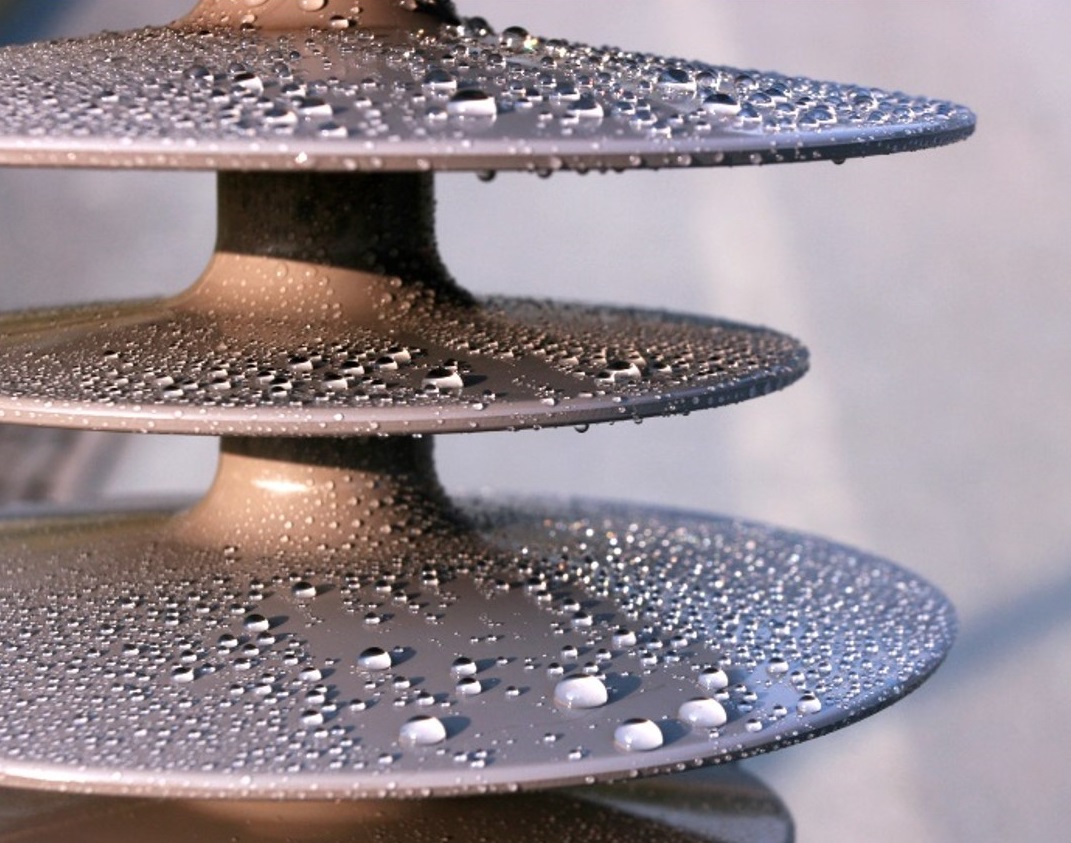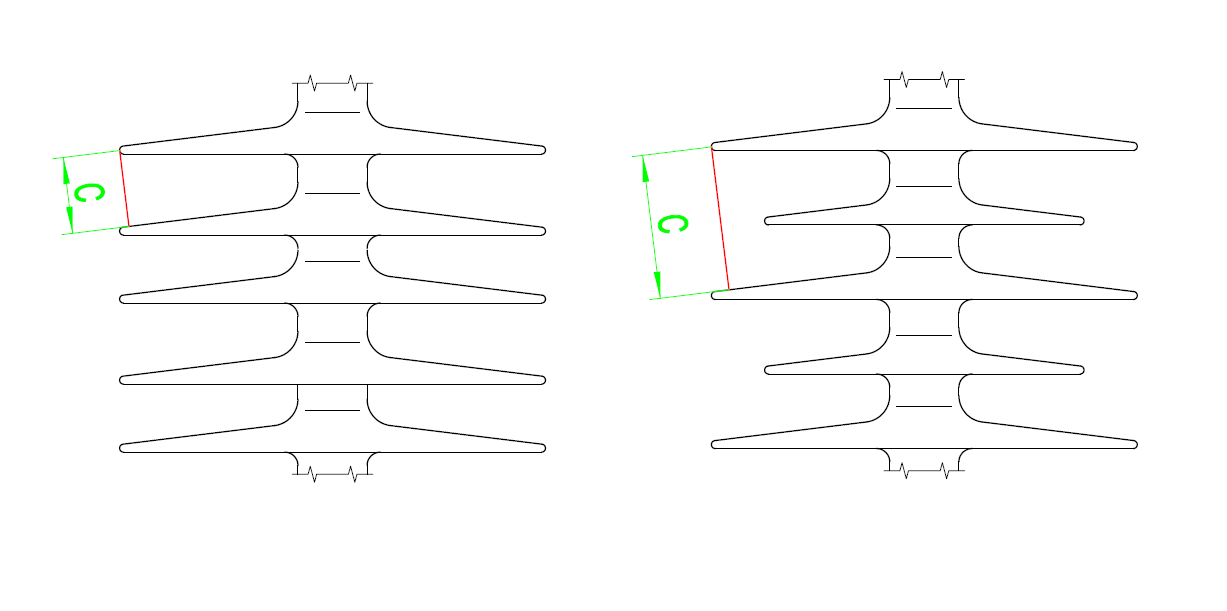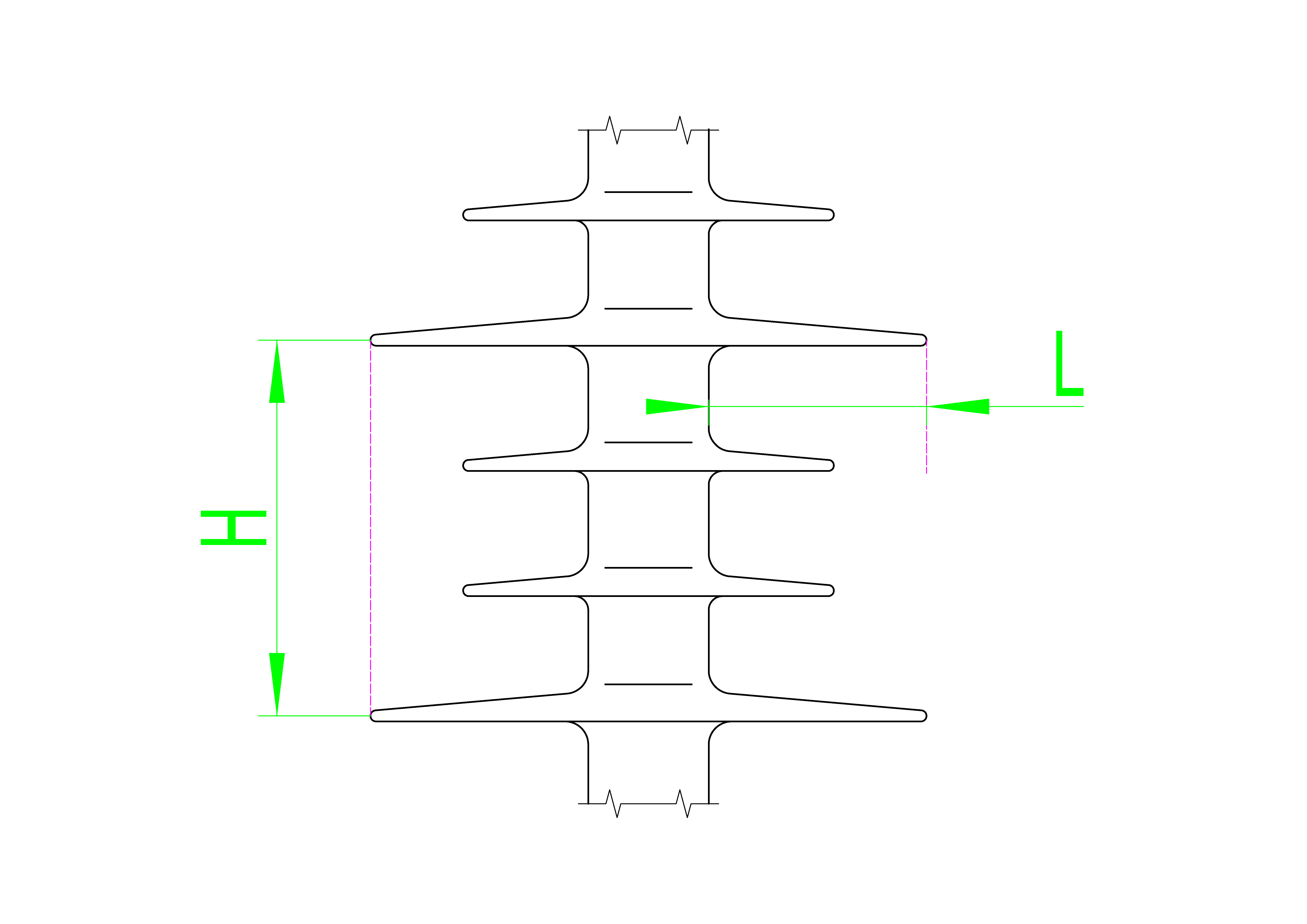Sheds and sheath of polymer insulator
06-01-2022
Overview
The Sheds and sheath is the outer insulating part of the composite insulator. Its function is to make the composite insulator have sufficiently high external insulation performance against moisture flashover and pollution flashover to protect the core rod from the external atmosphere. Sheds jackets are exposed to the outdoor atmosphere all year round, withstand various harsh weather conditions such as sun, rain, scorching heat, severe cold, etc., and withstand natural (flying dust, salt-alkali) and various industrial pollution. It may be exposed to dirty and humid conditions. Suffered from ablation by spark discharge or partial discharge. 'Sheds s are usually required to have excellent pollution flashover resistance, tracking resistance and electrical corrosion resistance, as well as ozone resistance, high and low temperature and other atmospheric aging effects. The excellent pollution resistance of composite insulators is mainly due to the Decided by the material of the Sheds sheath, it is directly related to the long-term aging of the composite insulator.

(1) Sheds design
The shape of the composite insulated Sheds is not as reasonable as porcelain and glass insulators. The composite insulator has a long and slender structure, and the electric field distribution along the surface is extremely uneven. The field strength is the highest at the junction of the shed sheath and the end fittings. The surface current density of the Sheds is proportional to the local field strength, and also depends on the surface area. The smaller the diameter of the cylinder, the higher the current density will cause local arcing. Local arc will not only cause deterioration of the end seal, but also affect the hydrophobicity of the shed surface. At the same time, it is easy to cause the partial creep ionization between adjacent Sheds s to be short-circuited by air and arc short-circuit between Sheds s during the line, which reduces the creepage distance and causes unknown flashover of the composite insulator. Especially after several years of operation, this phenomenon is more likely to occur when the hydrophobicity is partially or completely lost. Therefore, different shed designs have an important influence on the pollution resistance, electrical performance and service life of composite insulators. A good Sheds structure should give full consideration to the coordination of various parameters, so that it not only has the corresponding climbing distance and better anti-fouling performance and self-cleaning performance, but also can avoid the possibility of arc bridging between the Shedss, so that it can climb Distance can be.

Figure-1
Minimum distance between Shedss (C) and creepage coefficient (C.F.)
When designing Sheds s, the minimum distance between Shedss (C) and creepage coefficient (C.F.) are two very important parameters.
Minimum distance between Shedss (C) refers to the length of the vertical line from the lowest point of the drip edge of the upper Sheds to the surface of the next Sheds for adjacent large Shedss with the same Sheds diameter, as shown in Figure 1.
The creepage factor (C.F.) is the design parameter of the overall insulator size, which refers to the ratio of the total creepage distance of the insulator to the shortest distance along the air discharge between the two electrodes of the insulator. The power industry standard DW/T864-2004 made clear recommendations for the shape of Sheds s: the minimum distance between Shedss (C), the recommended c value for large and small Shedss should not be less than 70mrn; for equal diameter Shedss, the recommended c value should not be less than 40mm. /p>
As for the creepage coefficient (C.F.) to I and Il pollution levels, C.F. is recommended. F should not be greater than 3.2. For Ⅲ and Ⅳ pollution levels, it is recommended that C.F. should not be greater than 3.5.
Aerodynamic Sheds
Now some manufacturers and scientific research institutions have improved the design of Sheds s based on the above. Figure 2 shows an improved aerodynamic Sheds design. This structural design adopts a large and small Sheds design, which can not only improve the external insulation characteristics and increase the pollution withstand voltage, but also enhance the self-cleaning ability of the composite insulator in the air. The main technical parameters of the design Sheds are as follows:
- Sheds spacing/Sheds extension (H/L) is greater than or equal to 1;
- The thinnest part of the edge of the Sheds is greater than or equal to 4 mm;
- The thickest part of the base of the Sheds is less than or equal to 12 mm;
- The thickness of the sheath is greater than or equal to 5 mm;
- Sheds spacing is 75-100 mm;

Figure-2
(2) Sheds sheath material
The composite insulator Sheds sheath is made of silicone rubber material as the matrix, adding coupling agents, flame retardants, reinforcing agents, anti-aging agents and other fillers through high temperature vulcanization. At present, the Sheds sheath material of composite insulators produced in China is mainly made of methyl vinyl silicone rubber as the matrix. The composite material has the following properties:
- Stable chemical performance;
- Excellent high and low temperature resistance;
- Atmospheric aging resistance;
- Ozone aging resistance;
- The addition of reinforcing agents, flame retardants and other fillers greatly improves the mechanical properties of the silicone rubber material and its resistance to tracking and electrical corrosion.
- Water will form a state of separated water droplets or droplets on the surface of organic materials with very low surface energy, so the silicone rubber material has good water repellency
The most important characteristics of composite insulators are water repellency and hydrophobic migration characteristics, which determine the excellent pollution resistance of composite insulators and are a key factor for composite insulators to be suitable for external insulation in polluted areas.
However, the distance between the silicone rubber molecules is large, and the force between the molecules is weak, which causes the mechanical strength of silicone rubber itself to be low, which is lower than that of general rubber; at the same time, its hardness and wear resistance are poor. ; Resistance to leakage tracking, and resistance to electrical corrosion damage is not high. These weaknesses can be improved by adding fillers such as reinforcing agents and flame retardants to the silicone rubber. Generally, silicone rubber for composite insulators mainly contains the following components:
- Methyl vinyl silicone rubber 010-2 type)
- Reinforcing agent (No. 2 fumed silica)
- Flame retardant (superfine aluminum hydroxide powder)
- Colorant (iron oxide red or pigment carbon black)
- Chemical additives
- Vulcanizing agent
Reinforcing agent can improve the mechanical strength of silicone rubber, and the better effect is fumed silica, which is a very small porous SiO2. Adding proper amount of fumed silica can make the tensile strength up to 3-6MPa, and the tearing strength up to 5-15kN/m.
Adding alumina trihydrate (A1203·3H2O also called aluminum hydroxide) can be used as a flame retardant Significantly improve the resistance to tracking and electrical erosion. Its mechanism of action is that when the arc burns, the local surface temperature of the material increases significantly. When the alumina trihydrate is heated to about 220 ℃, it will quickly decompose crystal water and absorb a large amount of heat, thereby reducing the temperature of the material surface. The reaction equation is:
Under the catalysis of Al2O3, the decomposed water of crystallization can be generated during high temperature decomposition of organic materials. Free carbon reacts to produce gaseous CO. , CO2, to prevent the formation of conductive carbonization channels. At the same time, adding some metal oxides while adding alumina trihydrate will have the same effect as it, which will greatly improve the resistance to tracking and electrical corrosion of silicone rubber.
Adding fillers can improve certain properties of silicone rubber, while also reducing the cost of composite insulators. However, the addition of fillers has an impact on the performance of the silicone rubber itself. Reinforcing agent can improve the mechanical strength of silicone rubber, but it will reduce the resistance and power frequency breakdown voltage of silicone rubber products, and increase the relative dielectric constant and dielectric loss of power frequency; although flame retardants can improve the tracking resistance of products And electrical corrosion loss performance, but will weaken the water-repellent performance of silicone rubber materials.
Therefore, due to the different formulations of silicone rubber materials produced by different manufacturers, the hydrophobicity of the same called silicone rubber composite insulators is also quite different. According to long-term production practices, comprehensive consideration of the tear resistance, arc resistance, water repellency, and aging resistance of the Sheds sheath material, the filling of various raw materials in the formula must be controlled.
- The content of pure silicone rubber should be greater than 40%;
- The content of the filled aluminum hydroxide powder should be less than 40%.
At the same time, after the silicone rubber material deposits and covers the dirt layer, the surface of the dirt layer will also appear hydrophobic. The water will not form a continuous water film on the surface of the dirt layer, but will condense into separate water drops, larger water drops. Sliding from the surface under the action of gravity, this is the unique hydrophobic migration characteristics of silicone rubber materials.
It is precisely because of the two excellent characteristics of silicone rubber material that the dirt layer is not easy to be damp in a humid environment, only a small part of the salt can be dissolved, and most of the dirt cannot be dissolved into conductive ions. This effectively limits the leakage current on the surface of the pollution layer, it is difficult to form a local arc, and it is not easy to occur along the pollution flashover. Therefore, the composite insulator shows excellent pollution resistance in a dirty and humid environment.